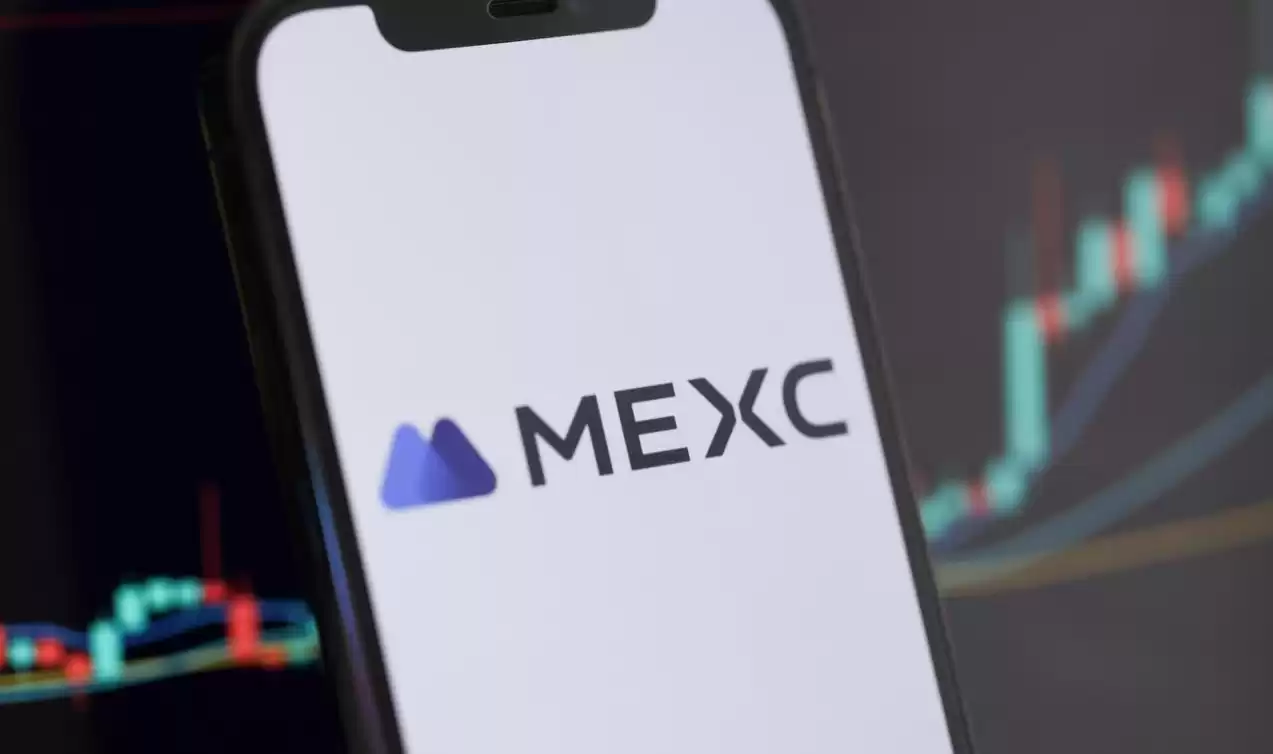-
 Bitcoin
Bitcoin $115700
0.65% -
 Ethereum
Ethereum $3785
3.93% -
 XRP
XRP $3.033
1.78% -
 Tether USDt
Tether USDt $1.000
0.04% -
 BNB
BNB $770.7
0.50% -
 Solana
Solana $168.4
0.56% -
 USDC
USDC $1.000
0.02% -
 TRON
TRON $0.3403
1.83% -
 Dogecoin
Dogecoin $0.2113
3.84% -
 Cardano
Cardano $0.7539
2.34% -
 Hyperliquid
Hyperliquid $38.84
1.28% -
 Sui
Sui $3.700
6.88% -
 Stellar
Stellar $0.4069
2.56% -
 Chainlink
Chainlink $17.80
6.93% -
 Bitcoin Cash
Bitcoin Cash $573.5
0.73% -
 Hedera
Hedera $0.2478
1.24% -
 Ethena USDe
Ethena USDe $1.001
0.00% -
 Avalanche
Avalanche $22.42
1.58% -
 Litecoin
Litecoin $120.6
2.58% -
 UNUS SED LEO
UNUS SED LEO $8.962
-0.29% -
 Toncoin
Toncoin $3.296
2.09% -
 Shiba Inu
Shiba Inu $0.00001251
1.77% -
 Uniswap
Uniswap $9.982
3.75% -
 Polkadot
Polkadot $3.710
1.55% -
 Dai
Dai $1.000
0.00% -
 Bitget Token
Bitget Token $4.425
1.98% -
 Monero
Monero $265.2
-7.14% -
 Cronos
Cronos $0.1472
2.44% -
 Pepe
Pepe $0.00001073
2.66% -
 Aave
Aave $270.9
4.17%
MEXC leverage tutorial
Leverage trading on MEXC empowers experienced traders to amplify trading potential and navigate market movements effectively, offering comprehensive options and advanced strategies to optimize outcomes while managing risks prudently.
Nov 11, 2024 at 10:06 pm

MEXC Leverage Tutorial: A Comprehensive Guide to Leveraged Trading
Leveraged trading amplifies trading potential by allowing traders to magnify their exposure to market movements. MEXC, a renowned cryptocurrency exchange, offers comprehensive leverage trading options for experienced traders. This tutorial explores the intricate aspects of MEXC leverage trading to empower traders with the knowledge and strategies to navigate this powerful trading mechanism effectively.
Understanding Key Concepts
Before venturing into leverage trading, it is imperative to grasp the fundamental concepts that underpin its mechanics:
- Leverage: Leverage represents the ratio of borrowed capital to the trader's own funds. It essentially amplifies the potential returns and risks associated with a trade.
- Margin: Margin refers to a collateral deposit that acts as a security against potential losses. Traders can use both their own funds and borrowed funds to increase their margin.
- Liquidation Price: This is the critical price level at which a trade is forcibly closed to prevent catastrophic losses. If the market price reaches this point, the trader's position is liquidated to cover their outstanding obligations.
Steps to Start Leverage Trading on MEXC
1. Open a Trading Account:
- Create a MEXC account if you haven't already.
- Complete the KYC (Know-Your-Customer) verification process.
2. Enable Leverage Trading:
- Access "Assets" from the MEXC trading page.
- Click "Margin" and select "Enable Leverage Trading."
- Assign the desired leverage level to your preferred trading pairs.
3. Fund Your Margin Wallet:
- Transfer funds from your Spot Wallet to your Margin Wallet.
- Ensure you have sufficient margin balance to support your leveraged trades.
4. Choose a Trading Pair and Place an Order:
- Navigate to the "Trade" section and select a trading pair you wish to leverage.
- Choose a trade type (e.g., Limit, Market) and specify the parameters (e.g., price, amount).
- Activate the "Leverage" option and adjust the leverage multiple as needed.
5. Monitor and Manage Your Position:
- Regularly track your open positions in the "Margin Trades" section.
- Monitor the market price and adjust your leverage or margin as necessary to mitigate risks.
- Keep an eye on the liquidation price to avoid potential forced closures.
Advanced Leverage Strategies
Experienced traders employ advanced strategies to optimize their leverage trading outcomes:
1. Hedging Position:
- Employing opposing trades (e.g., Long and Short) using different leverage multiples to mitigate risks.
2. Dollar-Cost Averaging:
- Dividing a large order into smaller tranches and executing them over time to reduce market impact and volatility risks.
3. Pyramiding:
- Gradually increasing the position size as the trade moves in the desired direction, maximizing profits while managing risks.
4. Trailing Leverage:
- Adjusting the leverage level dynamically based on market conditions to optimize returns and protect profits.
Risk Management Best Practices
Leverage trading entails inherent risks, so prudent risk management practices are vital:
1. Start Small:
- Avoid using excessive leverage initially, especially when starting out. Gradually increase leverage as you gain experience and confidence.
2. Set Realistic Expectations:
- Leverage trading can amplify both profits and losses. Set realistic profit targets and prepare for potential setbacks.
3. Utilize Stop-Loss Orders:
- Implement stop-loss orders to automatically close trades when the market price reaches a predefined level, limiting potential losses.
4. Monitor Market Trends:
- Continuously monitor market conditions (e.g., price action, volatility) and adjust your leverage strategies accordingly.
5. Diversify Portfolio:
- Spread your trades across multiple trading pairs and assets to mitigate concentration risks.
Disclaimer:info@kdj.com
The information provided is not trading advice. kdj.com does not assume any responsibility for any investments made based on the information provided in this article. Cryptocurrencies are highly volatile and it is highly recommended that you invest with caution after thorough research!
If you believe that the content used on this website infringes your copyright, please contact us immediately (info@kdj.com) and we will delete it promptly.
- Crypto Phishing Alert: $3 Million USDT Loss Highlights DeFi Risks
- 2025-08-08 01:10:12
- Crypto Presale Mania: Is Punisher Coin the High ROI King?
- 2025-08-08 01:10:12
- Online Betting, Platforms & Crypto Access: What's Hot in 2025
- 2025-08-08 00:50:12
- Bitcoin Mining, Natural Gas & Union Jack Oil: A New Dawn for Onshore UK Energy?
- 2025-08-08 00:55:12
- Bitcoin's Wild Ride: Bollinger Bands, $117K, and What's Next?
- 2025-08-08 00:30:12
- Ripple, Rail, and Stablecoin Payments: A $200M Power Play
- 2025-08-07 22:50:12
Related knowledge

What triggers a liquidation event on a Coinbase futures position?
Aug 08,2025 at 01:15am
Understanding Futures Contracts on CoinbaseFutures contracts on Coinbase allow traders to speculate on the future price of a cryptocurrency, such as B...

What is a straddle in crypto options trading?
Aug 07,2025 at 11:15pm
Understanding the Basics of a Straddle in Crypto OptionsA straddle is an options trading strategy used when a trader expects significant price movemen...

How is the funding rate calculated for perpetual futures?
Aug 07,2025 at 11:36pm
Understanding the Basics of Perpetual FuturesPerpetual futures are a type of derivative contract that does not have an expiration date, allowing trade...

What programming languages are used for smart contracts?
Aug 07,2025 at 06:07pm
Understanding Smart Contracts and Their Execution EnvironmentSmart contracts are self-executing programs deployed on blockchain networks that automati...

What is a short position in crypto contracts?
Aug 07,2025 at 11:42pm
Understanding the Concept of a Short Position in Crypto ContractsA short position in crypto contracts refers to a trading strategy where a trader prof...

What is a long position in crypto contracts?
Aug 07,2025 at 06:29pm
Understanding the Concept of a Long Position in Crypto ContractsA long position in crypto contracts refers to a trading strategy where a trader buys a...

What triggers a liquidation event on a Coinbase futures position?
Aug 08,2025 at 01:15am
Understanding Futures Contracts on CoinbaseFutures contracts on Coinbase allow traders to speculate on the future price of a cryptocurrency, such as B...

What is a straddle in crypto options trading?
Aug 07,2025 at 11:15pm
Understanding the Basics of a Straddle in Crypto OptionsA straddle is an options trading strategy used when a trader expects significant price movemen...

How is the funding rate calculated for perpetual futures?
Aug 07,2025 at 11:36pm
Understanding the Basics of Perpetual FuturesPerpetual futures are a type of derivative contract that does not have an expiration date, allowing trade...

What programming languages are used for smart contracts?
Aug 07,2025 at 06:07pm
Understanding Smart Contracts and Their Execution EnvironmentSmart contracts are self-executing programs deployed on blockchain networks that automati...

What is a short position in crypto contracts?
Aug 07,2025 at 11:42pm
Understanding the Concept of a Short Position in Crypto ContractsA short position in crypto contracts refers to a trading strategy where a trader prof...

What is a long position in crypto contracts?
Aug 07,2025 at 06:29pm
Understanding the Concept of a Long Position in Crypto ContractsA long position in crypto contracts refers to a trading strategy where a trader buys a...
See all articles

























































































